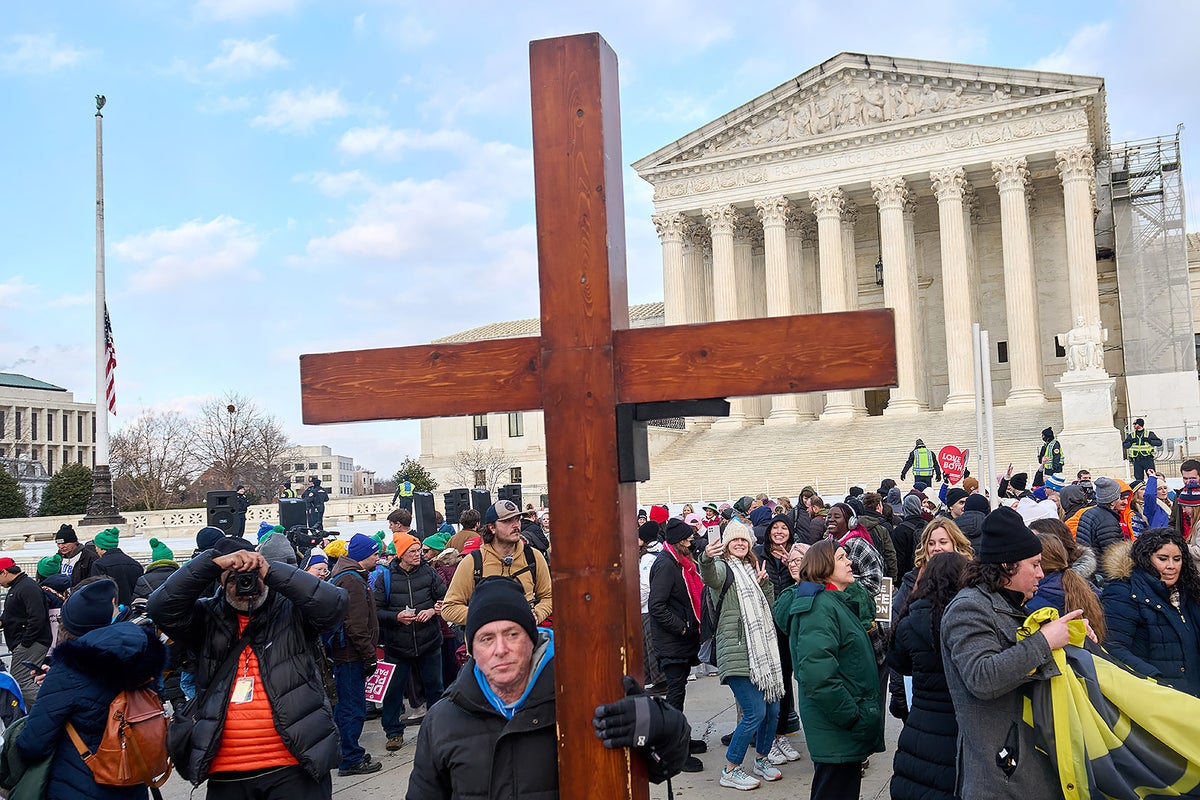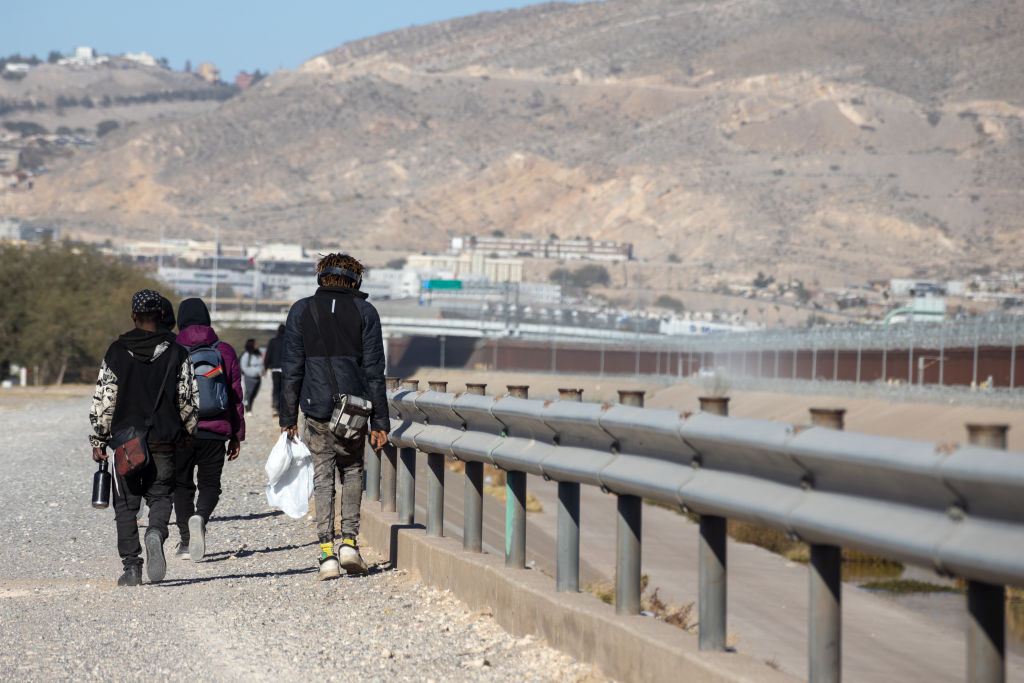The Supreme Court Could Soon Force Taxpayers to Fund a Catholic School

Sign up for the Slatest to get the most insightful analysis, criticism, and advice out there, delivered to your inbox daily. On Wednesday, the Supreme Court will hear arguments in a major case that poses a baffling question: Does the Constitution compel states to fund explicitly Catholic education? In the past, the Supreme Court held that the First Amendment’s establishment clause forbids states from spending taxpayer dollars on religious instruction. Over the past eight years, however, the court has repudiated this principle, holding instead that the First Amendment’s free exercise clause requires states to help fund parochial schools. Now it will decide whether to take these recent precedents to a new extreme by ordering Oklahoma to establish and fund a Catholic charter school owned and operated by the church itself. Mary Harris spoke with Slate’s Mark Joseph Stern about this case, and the Supreme Court’s broader assault on secular public education, on Monday’s episode of What Next. An excerpt of their conversation, below, has been edited and condensed for clarity. Mary Harris: I want to talk about a case that a lot of educators are frankly concerned about called Oklahoma Statewide Charter School Board v. Drummond. It’s about a school named St. Isidore’s, a Catholic charter school in Oklahoma. Mark Joseph Stern: This is the very first Catholic charter school ever created in the United States. The Oklahoma body that governs charter schools narrowly approved this school to operate; it will be a virtual school, with primarily online learning, but it will be fully accredited. And it will also be a fully Catholic school rooted in the Catholic Church’s teachings. It will expect students and teachers alike to adhere to Catholic doctrine and dogma. And as of right now, it is demanding money from the state of Oklahoma, taxpayer dollars, in order to operate. It’s claiming that it has a right to access the public funds that all other charter schools in the state receive in order to provide a Catholic education. After Oklahoma approved St. Isidore, the Oklahoma attorney general, Gentner Drummond, filed a lawsuit. Now, Drummond is a conservative Republican. He is not a flaming liberal. I believe that he is a devout man himself. But he said, I have a constitutional duty to object. And the Oklahoma Constitution says … The Oklahoma Constitution is very clear. It states that “no public money … shall ever be appropriated … or used, directly or indirectly, for the use, benefit, or support of any sect, church, denomination, or system of religion … or sectarian institution.” It also says, in a separate but equally important section, that “provisions shall be made for the establishment and maintenance of a system of public schools, which shall be open to all the children of the state and free from sectarian control.” Citing these requirements, the Oklahoma Supreme Court ruled last year that the school violated the state constitution. So it’s appealed from the state Supreme Court to the Supreme Court? The school argued that its exclusion from the charter program violates the First Amendment’s guarantee of religious freedom. Yes, though Justice Amy Coney Barrett recused herself. She didn’t give an explanation, but I think it’s because one of her close friends worked closely on the case: Nicole Garnett, a former colleague at University of Notre Dame Law School. And props to Barrett for having some basic conception of ethics—I admire that! But I think it’s also pretty concerning that even with Barrett recused, the justices took this up. Remember, it requires four votes to take up a case. So I think it’s pretty clear that at least four conservatives are ready to rule for the charter school, and they are confident that there’s a fifth who’s ready to join them. Well, aren’t religious charter schools already getting funding in some states around the country? Some charter schools have religious affiliations, but they provide secular education and at least claim to abide by all the rules and requirements of other public schools. Charter schools have, until now, generally agreed to play by the ground rules of the public education system because they are, inherently and fundamentally, public schools. St. Isidore will not agree to that bargain—it wants to provide overtly religious, Catholic instruction. And it claims it’s not a public school, but in terms of how Oklahoma law conceptualizes these institutions, it very clearly is. Oh, so this Catholic school is saying both that it doesn’t have to abide by the general rules of public education and that it gets to be a very Catholic place where you’re required to go to Mass and things? That’s right. In fact, St. Isidore would require its students to attend mass, receive Catholic teachings, and abide by the faith more broadly. This school is arguing that it gets to operate as an organ of the church—which, to be clear, it very much is. This is not some independent spin-off institution that has some affiliation with the Catholic Church. This is the Catholic Church opening a charter school. If the Supreme Court sides with the church in the case and says it has a First Amendment right to be recognized and funded by the state, then that, to me, is a serious threat to everyone’s religious liberty that has been all but erased from this case. This case is really doing a lot. It’s doing so much and getting so little attention. And I think this is key to understanding how the Supreme Court operates in the second Trump era. Yes, we’re all paying attention to these clashes with the Trump administration, and we’re wondering: When is SCOTUS going to stand up to Trump? Where is it going to draw the line? But you have to remember that the court has its own independent agenda that it’s pursuing at a rapid clip. Yes, it often aligns with the Trump administration. Occasionally, it doesn’t. But when it does, as here, the Supreme Court is going to move forward as quickly and aggressively and recklessly as it wants. And so while all eyes are on Trump—and all these wild cases involving illegal deportations and suppression of free speech and more—the court is just chugging along, threatening the entire structure of public education in America. And most people just aren’t really paying attention to it. It’s really striking to look at this case alongside Mahmoud v. Taylor, which is about public school parents seeking to “opt-out” their children from seeing certain books in Montgomery County, Maryland. The two mirror each other in an interesting way. In one case, the Maryland one, the argument is that exposure to material about gay families is harmful. The parents say that their kids are being indoctrinated, even though they’re just being exposed to narratives about the world around them. And then, in this other case, about the Oklahoma school, the argument is: Actually, there’s no problem indoctrinating kids. In fact, it’s constitutionally required. I don’t understand how the Supreme Court could rule in favor of the parents in Maryland and also rule in favor of the Catholic school in Oklahoma. Isn’t there a fundamental tension here? You could call it a fundamental tension, but it’s really just hypocrisy. I think the Supreme Court will likely say that it is indoctrination for a school to simply have books in the classroom that feature LGBTQ+ characters—but that it’s no problem at all to have state funding go directly to Catholic schools that will actively indoctrinate students with the Catholic faith. And that such state-funded proselytization is, in fact, required by the First Amendment. There’s this game being played where, somehow, mere exposure to a book with a same-sex couple is forbidden indoctrination, while active, coercive proselytization of students in one particular faith is not a problem at all. And it’s impossible to square those things. You really have to contort the First Amendment to get to a place where one is constitutionally problematic and the other is somehow constitutionally mandated. But that’s the place we are now approaching.



















